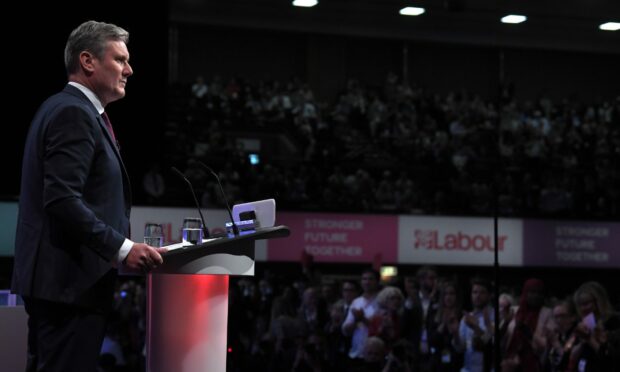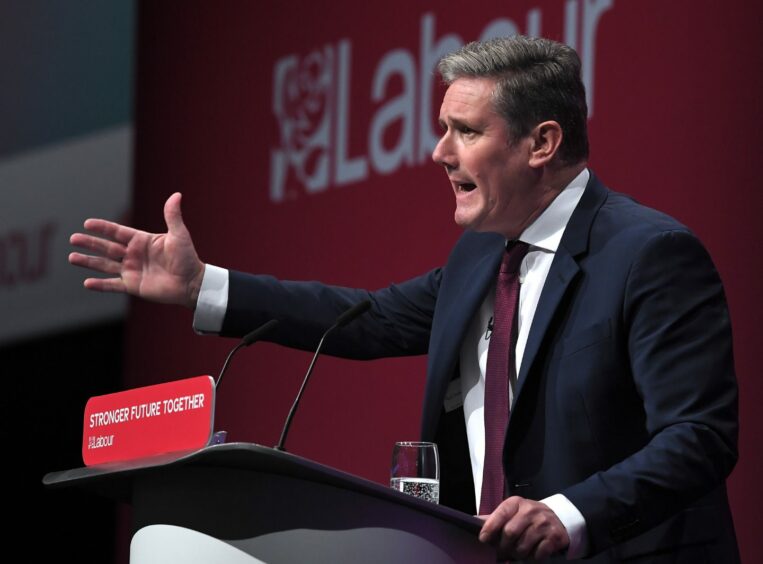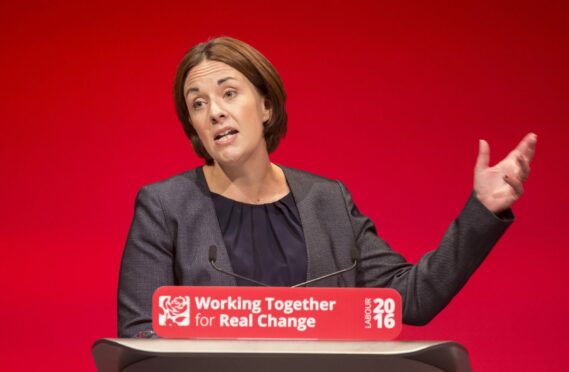Party political conference season is well and truly underway.
Whilst the SNP chose to have theirs digitally for a second year in a row, Labour have returned to in person events, with a mass gathering in Brighton.
I have really fond memories of attending these big set piece events, not least because it’s the only time in any given year where you can be sure to catch up with activists and friends from all over country.
In recent times, it also means putting a real live face to someone you only know from Twitter. But do they serve any greater purpose than a big seaside social in 2021?
Opportunity to speak to the nation
For party leaders and senior figures these events are certainly more than a social gathering.
It’s an annual opportunity to speak to the nation, with Ofcom rules guaranteeing some telly coverage. A chance to explain who you are and what you stand for.
Every political leader goes into a party conference with what the political advisers refer to as a grid or a message calendar.
A beautifully methodical plan of what you want the news stories coming out of conference to be. The challenge then is to see how closely you can stick to it and how much events elsewhere can blow it off course.
Keir Starmer is facing that challenge for the first time as Leader this week and he has done so against the backdrop of a global pandemic and a fuel shortage.
He’s already faced some criticism that he’s been obsessing with his own party’s internal rule book whilst the country obsesses about where it’s going to get it’s next tank full of fuel. Criticism like that is as unfair as it is predictable though.
Of course conferences, of whatever political hue, will have their mundane moments as they plough through their housekeeping.
Just as they’ll have other moments which will capture the headlines for all the wrong reasons.
Just as every party will have its handful of activists who love a good point of order or dressing up for the occasion.
It’s priced into the formula of taking thousands of party activists, a party’s full compliment of politicians and every political journalist in the country and ramming them all into a relatively small seaside town.
Will party conferences survive the pandemic?
As we assess what going back to normal looks like, I wonder whether party conferences themselves might be a casualty of the pandemic.
Are they really the best way for a party to present its vision to the country? Is it even the best way to get party members to vote on policies and to debate all the big issues facing the country when so many more people could arguably be involved in a digital alternative.
Sure it makes for great political theatre, but does it add to the quality of our political debate?
Does it encourage ordinary people towards political debate or away from it?
Memorable conference moments over the years
When I think about all the big moments that have happened in conferences in years gone by, I see the vintage footage of a 16 year old William Hague crusading against Jim Callaghan’s socialism.
Neil Kinnock taking on the militant with his rousing speech about a Labour council dishing out redundancy notices by taxi.
John Redwood struggling with the Welsh national anthem. Tony Blair’s clause IV moment and the letter’s following off the staging whilst Theresa May fought off a cough.
They tend to tell us far more about the character of our leaders than they do the platform of their respective parties.
I had two major Scottish Labour conference’s as Leader. The first was by far and away my biggest test. For one thing, I’d never written or delivered an hour long speech before.
The effort that goes into the drafting of these set piece events is incredible. Countless hours spent refining policy ideas and language in rooms full of advisers.
Draft after draft, with the midnight oil burning. I had to prove to the party I had what it takes, whatever that is and the thrill of the adrenalin rush afterwards was unforgettable.
My second conference as Leader was a very different experience in part because I was really ill. I had a chest infection that was so severe I could barely sit up.
When my voice went, my team of advisers had to contemplate a conference without a leader’s speech. It was grim. I ended up getting the right combo of drugs to get me on my feet for an afternoon before collapsing into bed. Our leaders don’t really get to phone in sick.
I’m not convinced our politics would be any weaker for party conferences disappearing tomorrow.
I’m also not sure they are the best test of our politicians leadership qualities, or character.
Perhaps its time to find new ways of testing whether our leaders understand our lives and our hopes and fears for the future beyond elections.
Read more from Kezia:


